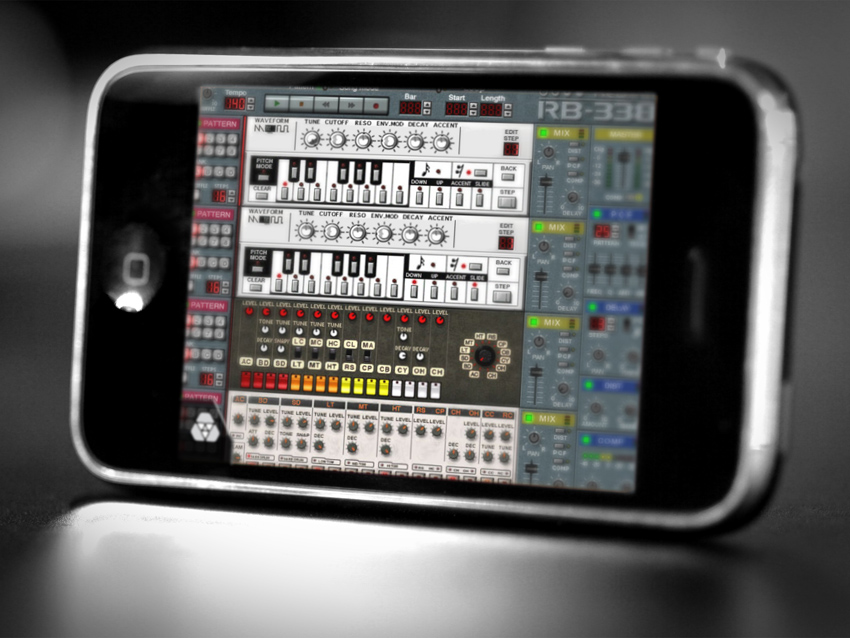ReBirth for iPhone - Reason for iPad?

While MusicRadar was busy wondering what Propellerhead Software is planning to release for the iPad, the company has gone and launched an iPhone/iPod touch version of its seminal ReBirth soft synth. This was made in collaboration with San Franciscan developer Retronyms.
The new app, which is a direct port of the hugely popular Mac and PC software that made such a splash in the mid to late '90s, emulates Roland's TB-303 Bassline synth and TR-808 and TR-909 drum machines. It'll work on the iPad as well, but not natively.
So what does this mean? Initial reports suggest that the mobile app sounds just like the original, though some have questioned whether its detailed interface is really suited to the small screen. It's also worth mentioning that iPhone users already had 303, 808 and 909 sounds via AudioRealism's Technobox.
More importantly, though, like Korg's iPad version of the Electribe, it shows that traditional music technology companies are taking the iPhone OS seriously, and suggests that there could be some exciting stuff to come in the future.
Speaking to Create Digital Music on the release of iPhone ReBirth, Propellerhead CEO Ernst Nathorst-Böös reiterated an opinion already voice to MusicRadar by saying that: "The iPad is a slightly different beast, compared to the phone and Touch and we prefer to get it right rather than to be first."
All the signs are, then, that Propellerhead may have a more ambitious plan for Apple's larger multitouch device. Naturally enough, our thoughts turn once again to the possibility of Reason on the iPad: now that really would be a software rebirth worth waiting for…
Get the MusicRadar Newsletter
Want all the hottest music and gear news, reviews, deals, features and more, direct to your inbox? Sign up here.

I’m the Deputy Editor of MusicRadar, having worked on the site since its launch in 2007. I previously spent eight years working on our sister magazine, Computer Music. I’ve been playing the piano, gigging in bands and failing to finish tracks at home for more than 30 years, 24 of which I’ve also spent writing about music and the ever-changing technology used to make it.










